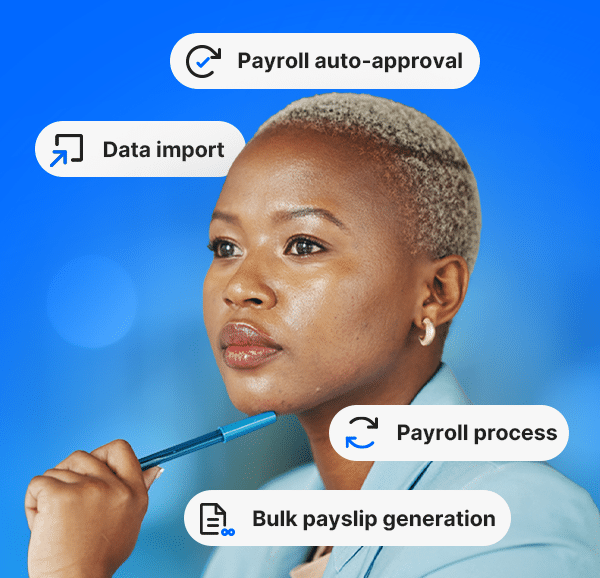If you’re reading this blog, then the chances are that you’re pretty well-versed in the power of technology to transform HR and payroll. You’re probably using advanced payroll software and HCM solutions day-in, day-out, and you’re already benefiting from the efficiency, consistency, data-driven decision-making, and cost-effectiveness that these solutions enable.
As these benefits have become more apparent, the C-suite has also become more willing to invest in new technology. However, this message isn’t always getting through to the wider workforce. With technology advancing so fast (especially in areas like artificial intelligence) and so many tools around, many employees struggle to keep up with what they can do with what, where, and when.
Adoption of the latest payroll and HR tech can therefore often remain sluggish, despite the fact that payroll errors and inefficiencies are one of the biggest bugbears employees have, and these solutions can help cut those issues out. Not only does this mean they’re missing out on the payroll and human resources experiences they want, but it also means any investment is going to waste if solutions are going under-utilized.
Eight ways to encourage employee take-up of digital tools
Many of the barriers to adoption within the workforce are down to a lack of understanding, so it’s up to payroll and HR teams to communicate the benefits of these solutions effectively. We recommend these eight strategies to achieve the necessary cut-through:
- Transparency: honesty is always the best policy when it comes to any new technology. It’s essential that you’re up-front with employees about what the tech can do for them, why the change is necessary, and what it can do for them. This clarity can play a big part in getting employees’ initial buy-in
- A gradual approach: one of the biggest reasons employees shy away from new solutions is that they get overwhelmed by them. If they’re faced with a million and one new capabilities, and have been left alone to work them out, they’ll often quickly give up. The best approach is to encourage employee engagement by easing them in gently, starting with core functions, and providing training and support along the way
- Clear demonstration of benefits: there are many ways in which you can articulate the plus points of a new solution to a workforce. These can include (and are by no means limited to) workshops, live town hall-style demonstrations, or hands-on interactive training, all of which can help employees get up to speed gradually
- Emphasis on improvement: connected to the previous point, it can also really help to join the dots between functionality and a tangible positive effect on an employee’s day-to-day work. Employees should feel like they can explore the benefits pertaining to their own personal working circumstances in their own time
- Continuous communication: there should ideally be an implementation team designated who can support employees throughout the change. They should be responsible for a regular stream of communication – before, during, and after deployment – and help employees understand what the new solutions can do for them
- Tackle reasons for resistance: of course, many people are naturally resistant to change within the workplace, but getting those people on board is instrumental to achieving full adoption. Your implementation team should work hard to identify common complaints and pain points (especially if some of them are team or department-specific) and devise positive strategies to motivate them to change their minds
- Listen to feedback: getting the workforce directly involved in the implementation can work wonders in adoption. Even something as simple as a survey, which shows that you’re open to feedback and communication, can help boost employee satisfaction, as they feel that they’re involved and the new solutions are being deployed in their interests
- Choose the right solutions: making the right solution choice is crucial for a number of reasons, and it’s not just down to user-friendliness. You also need to consider how well the solution will integrate with your existing HR and payroll processes and data; ideally, it will help you streamline processes into one seamless pay experience, and a single source of truth for your data
In summary
The last point on the above list is perhaps the most important. If you select a payroll or HR solution that doesn’t integrate well (or at all), doesn’t deliver clear benefits to employee experiences, and is difficult to implement gradually, then the first seven points all become much, much harder to achieve.
It’s for this reason that integration sits at the core of CloudPay’s global payroll solution. It connects payroll, treasury, and on-demand pay processes in every country you operate in, and can integrate with your HR and HCM systems and data. What’s more, our experts can give you all the support you need in implementing best practices, navigating change, and optimizing employee experiences in the long term. Explore our HR and payroll integration in more detail here.


